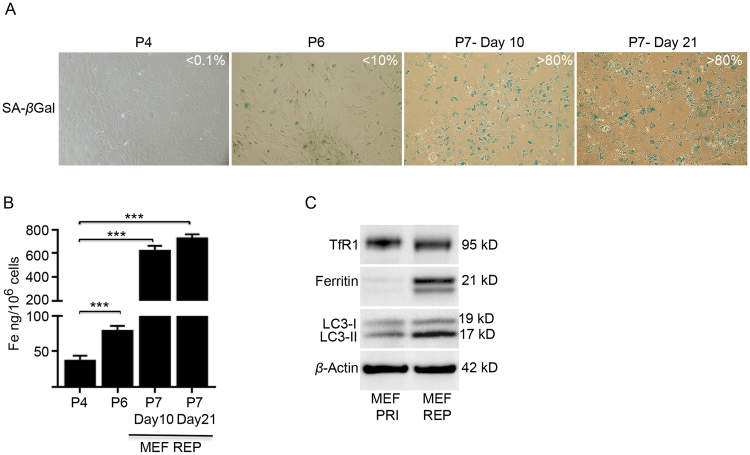Fig. S3.
Iron accumulation in replicative senescent MEFs is maintained and associated with impaired ferritinophagy. (A) Intracellular iron accumulation occurred concurrent with replicative senescence in passaging MEFs (MEF REP). Percentage of senescent MEFs in passaged cultures (passages 4, 6 and 7) as determined by SA-βgal activity (blue staining). Images were taken at 100X magnification. (B) ICP-MS analyses demonstrated that iron accumulated when replicative senescence commenced ( < 10%) at passage 6 and was augmented with senescence enrichment (>80%) at passage 7. Note that iron accumulation somewhat plateaued (~18-fold) after culturing passage 7 senescent MEFs for 10 days. (C) Western blot analyses demonstrated that replicative senescent MEFs (MEF REP) have increased TfR1, ferritin and LC3-II in comparison to primary MEFs (MEF PRI). The large build-up of LC3-II indicates impaired lysosomal function. β-actin was detected as a loading control. Statistical analysis was performed by student-t-test: significant (*p < 0.05, **p < 0.01, ***p < 0.001). Data represented as mean ± SD (n = 3).

